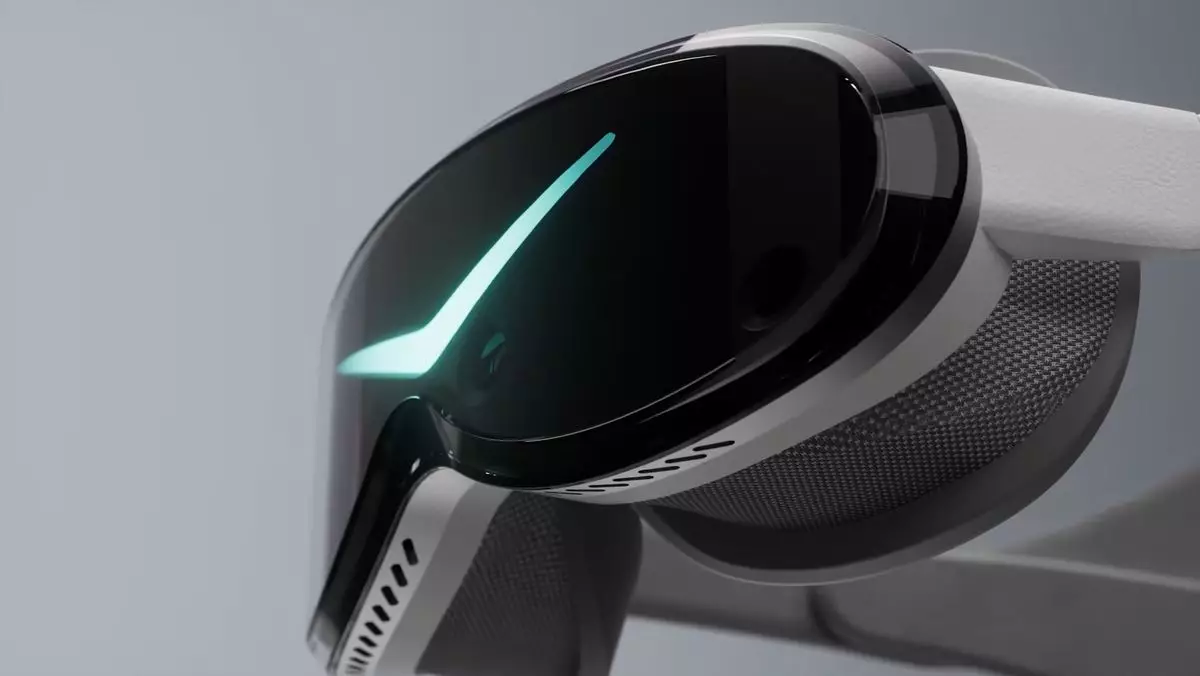The virtual reality (VR) sector has seen remarkable transformations over the years. With innovations in technology and design, VR headsets have evolved from bulky devices to sleek, lightweight models that promise immersive experiences. At the forefront of this evolution is Pimax, a company known for its ambition and relentless pursuit of cutting-edge VR solutions. Their latest offering, the Dream Air, symbolizes a significant leap in VR technology, boasting a form factor and feature set that are set to raise the bar for future headsets.
One of the most striking features of the Pimax Dream Air is its weight—or rather, the lack of it. At under 200 grams, this headset challenges the perception of what a VR device can be. For context, consider the Valve Index, which weighs over 800 grams; it’s clear that Pimax is determined to usher in a new era of comfort with this device. The Dream Air is crafted to be undeniably portable and user-friendly, addressing one of the significant pain points users face with traditional VR headsets—weight and discomfort during prolonged use.
The headset’s design does not falter in aesthetic appeal either. Its sleek curves and modern gray finish lend it a sophisticated look reminiscent of premium tech gadgets like the Apple Vision Pro. The use of Micro-OLED technology is a key ingredient in achieving this balance of aesthetics and ergonomics, allowing Pimax to deliver a compact headset without compromising performance. In terms of form factor, the Dream Air is touted to be the “world’s smallest and lightest” headset to support a full range of features—which is an impressive claim that highlights its potential market disruption.
The performance of the Dream Air reflects its ambitious design. Equipped with 8K resolution capabilities, the device ensures that users enjoy stunning visuals while immersing themselves in virtual worlds, making for an enhanced experience that flatters even the most demanding applications. Pimax promises that users will not miss out on quality simply because of the reduced weight; in fact, the Dream Air challenges the notion that you must sacrifice performance for comfort.
The headset’s internal tracking cameras and spatial audio integration add significant value, facilitating a fully immersive experience. Importantly, the self-adjusting headstrap and features like auto-IPD (inter-pupillary distance) adjustments ensure optimal comfort, accommodating varied user preferences.
Additionally, the gadget showcases a range of advanced functionalities such as hand tracking and eye tracking—an impressive inclusion that sets it apart from many competitors. Eye tracking alone enhances user engagement and interaction, allowing for actions within applications based on where a user is looking—a feature that can revolutionize gaming and virtual environments.
The entry price for the Pimax Dream Air, set at an estimated $1,199 with a total expenditure of nearly $2,000 after factoring in taxes and shipping, positions it at the premium end of the VR market. Comparatively, the Pimax Crystal Super, another upcoming model, comes with a more budget-friendly price point of around $699 yet lacks some of the state-of-the-art features that Dream Air includes. This pricing strategy raises questions about consumer value and willingness to pay for advanced technology.
While it would be reasonable to assume that some might balk at the high upfront cost of the Dream Air, enthusiasts who prioritize cutting-edge features—for instance, eye tracking—may feel that the premium is justified. Competitors like the Bigscreen Beyond may present a lighter option, but they lack the extensive feature set provided by Pimax.
As we anticipate the launch of the Pimax Dream Air in May 2025, expectations are heightened among VR enthusiasts and casual users alike. The innovative design, lightweight construction, and robust performance metrics position it as a potential game-changer in the VR market. However, whether the headset will meet consumer expectations remains to be seen.
As we stand at the intersection of consumer technology and entertainment, the Dream Air signifies not only Pimax’s ambitious vision but also the continuous evolution of VR toward becoming a mainstream experience. It will be fascinating to watch how this competition unfolds, especially as companies like Meta and Valve adjust their strategies in response to emerging innovations such as those offered by Pimax. The future of virtual reality has never looked more promising, and with products like the Dream Air, it is poised to deliver experiences that were once thought to be only a dream.


Leave a Reply